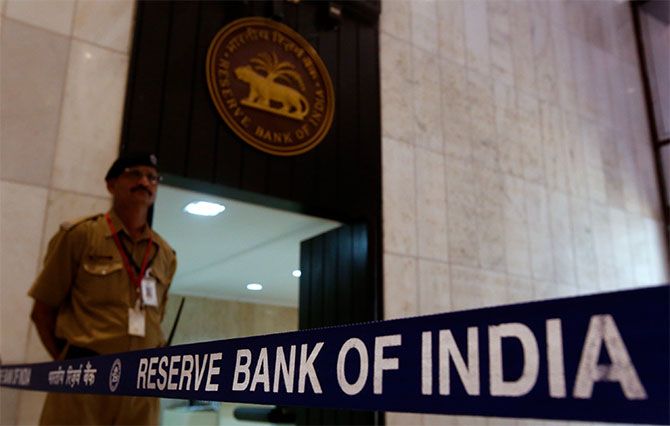 | « Back to article | Print this article |
It had been pointed out to the banking regulator that one-day default was difficult to monitor in large companies, especially where cash flows are dependent on government payments.

The Reserve Bank of India (RBI) is likely to replace the controversial one-day default norm and give a grace period of 30 days to identify the early stress of borrowers.
This will form part of the revised February 12 circular, which is in the works, and would come as a breather for India Inc.
Under the February 12 circular, even a one-day default on the principal or interest payment, or any other amount, wholly or partly, would lead to banks classifying the account as a special mention account (SMA).
The Supreme Court had struck down the RBI’s February 12 circular last month and termed it ultra vires.
The other big change will be in the treatment accorded to term loans vis-à-vis revolving facilities such as cash credit.
Under the now defunct February 12 circular, the one-day default norm applied to term loans and not to cash credit limits.
In the case of the latter, default kicked in only when the outstanding balance remained continuously in excess of the sanctioned limit or drawing power, whichever is lower, for more than 30 days or SMA-1.
The revised circular will incorporate the continuous 30-day period even in the case of term loans.
The SMA-0 category of default, which is between zero and 30 days, and was the bone of contention for corporates, will not apply under the new norms.
The new changes are also warranted by the fact that from April 1, a minimum of 40 per cent of the fund-based limits of a borrower are required to be structured in the form of a loan component with a fixed maturity; it is to be hiked to 60 per cent from July 1.
This will have an impact on borrowers who will now have to adjust to the new regime whereby a large share of working capital borrowings would have a defined repayment schedule.
A well-placed source said it had been pointed out to the banking regulator that one-day default was difficult to monitor in large companies, especially where cash flows are dependent on government payments.
It is more so in the case of infrastructure companies which puts them under undue stress.
There have been cases where banks reported even triple-A rated firms as defaulters to the Central Repository of Information on Large Credits (CRILC) only to have this reversed after some of them having paid up.
The other change on the cards is on the reference date for resolution under the Insolvency and Bankruptcy Code (2016) - it is to be from the date an account is classified as SMA-1.
The reference date under the February 12 circular was “on or after March 1, 2018”.
It further said “if in default as on the reference date”, then it is to be 180 days from the said date for referral to the IBC; and “if in default after the reference date”, then 180 days from the date of the first such default.
| A new order |
|
One-day default norm to give way to a variant of SMA-1 |
Photograph: Reuters